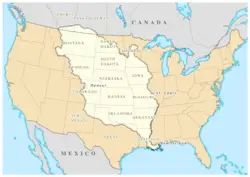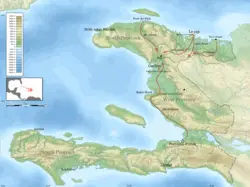Why did France sell the Louisiana Purchase to the United States
The Louisiana Purchase encompassed 530,000,000 acres of territory in North America that the United States purchased from France in 1803 for $15 million. As the United States spread across the Appalachians, the Mississippi River became an increasingly important conduit for the produce of America’s West (which at that time referred to the land between the Appalachians and the Mississippi). Since 1762, Spain had owned the territory of Louisiana, which included 828,000 square miles. The territory made up all or part of fifteen modern U.S. states between the Mississippi River and the Rocky Mountains.
Napoleon wanted to expand the French Empire in North America
The Pinckney treaty of 1795 had resolved friction between Spain and the United States over the right to navigate the Mississippi and the right for Americans to transfer their goods to ocean-going vessels at New Orleans. With the Pinckney treaty in place and the weak Spanish empire in control of Louisiana, American politicians felt comfortable that the United States’ westward expansion would not be restricted in the future.
This situation was threatened by Napoleon Bonaparte’s plans to revive the French empire in the New World. He planned to recapture the valuable sugar colony of St. Domingue from Toussaint Louverture and then use Louisiana as the granary for his empire. Louverture not only led the original revolt but had become the governor of Saint Domingue and had declared self-rule in 1801. France acquired Louisiana from Spain in 1800 and took possession in 1802.
France wanted to end Louvertre's rule and reinstate slavery. Napoleon sent a massive 30,000 troops French expeditionary force commanded by his brother-in-law Charles Victor Emmanuel Leclerc to St. Domingue to accomplish this goal. The French force's size suggests that the army was not just sent to take control of St. Domingue, but Napoleon clearly wanted the army to occupy the Louisiana Purchase for France. This army put France directly at odds with the United States' ambitions.
Why France's ambitions in North America fall apart?
Westerners became very apprehensive about having the more-powerful French in control of New Orleans: President Thomas Jefferson noted, “There is on the globe one single spot, the possessor of which is our natural and habitual enemy. It is New Orleans.” In addition to making military preparations for conflict in the Mississippi Valley, Jefferson sent James Monroe to join Robert Livingston in France to purchase New Orleans and West Florida for as much as $10 million. Failing that, they were to attempt to create a military alliance with England.
Unfortunately for France, yellow fever decimated Napoleon's army of 30,000 troops in St. Domingue (Haiti) during its expedition. Similarly, ten years earlier, British troops suffered a similar fate on the island and had casualty rates as high as 70%. France was utterly unprepared to deal with yellow fever. Additionally, the war between France and England posed a serious threat to French ambitions in North America. The deadly outbreak of yellow fever ultimately ended Napoleon's North American dreams. He decided to give up his plans for Louisiana and surprised Monroe and Livingston the entire Louisiana territory for $15 million. Although this far exceeded their instructions from President Jefferson, they agreed.
Conclusion
When news of the sale reached the United States, the West was elated. President Jefferson, however, was in a quandary. He had always advocated strict adherence to the letter of the Constitution, yet there was no provision empowering him to purchase territory. Given the public support for the purchase and the obvious value of Louisiana to the future growth of the United States, Jefferson decided to ignore the legalistic interpretation of the Constitution and forgo the passage of a Constitutional amendment to validate the purchase. This decision contributed to the principle of implied powers of the federal government.
Related Articles
- How did the Second Great Awakening change the United States
- Why did the Treaty of Wangxia negotiated with the United States ultimately alienate China
- How did the United States resolve its dispute with Great Britain over the Oregon Territory
- Why did Daniel Webster negotiate the Webster-Ashburton Treaty with Britain
- Why did the United States free the African captives on the Spanish schooner Amistad
- What caused the War of 1812
- How was the United Nations formed after World War Two
- Why did the United States pass the Chinese Exclusion Acts
- How did the United States and Great Britain eliminate their dueling navies on the Great Lakes and establish their borders in 1818
- How did the United States acquire Florida
- Republished from Office of the Historian, United States Department of State
- Article: Louisiana Purchase, 1803

